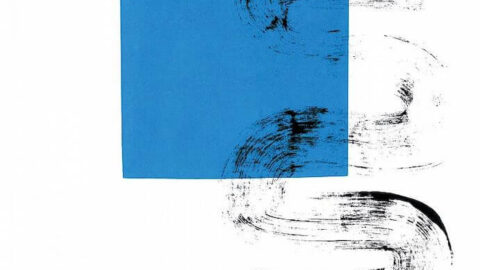Out on New Focus Recordings is in manus tuas, the debut solo album from composer and violist Anne Leilehua Lanzilotti. The record is primarily a collection of transcriptions of pieces written first for cello or violin that Lanzilotti has reinterpreted for viola. Lanzilotti is particularly adept at navigating the challenges one might find shifting new music repertoire from cello to viola, but her listeners would never hear that difficulty. Her playing is largely balanced, both in tone and with the other instruments that accompany her on the pieces she has selected for the album. With works by Andrew Norman, Caroline Shaw, Lanzilotti, and Anna Thorvaldsdóttir, in manus tuas is a fantastic debut.
Andrew Norman paired piano and cello in the five movements of his piece Sonnets, inspired by excerpts from Shakespeare’s texts. The movements are clearly inspired by spoken language; the instruments are often in conversation with each other. Most of the time, cello and piano are “speaking” in contrasting voices, but Lanzilotti’s re-interpretation for viola and piano (played by Karl Larson) forces both parts into the same register. While listeners might expect to miss the deep, vibrating richness of the cello paired with the piano, Lanzilotti makes sure we don’t. Because the transcription positions the viola part an octave up from the original work, the two sounding instruments are close in register. Though the higher register dissolves some of the richness one might expect, Lanzilotti plays with a softness, not of volume, but of emotional range, that fills in any interpretive void. The piano and viola in the final movement, “confounded to decay,” are a highlight: Lanzilotti makes the harmonics speak just softly enough to draw her listener completely in.

Caroline Shaw based the eponymous in manus tuas on a Thomas Tallis motet. The writing reflects a blending of early and 21st-century musical ideas, weaving in and out of functional tonality and conventional playing techniques. Originally written for solo cello, Shaw nods to the motet itself, asking the performer to vocalize. Lanzilotti’s treatment of in manus tuas is particularly sensitive: her tone in this transcription exudes stability, allowing for both richness and brightness in the color of her playing. The uniformity in color and the higher register, in turn, showcases an articulate and deliberate sound. It thus allows the listener to hear the many measures of arpeggiated chord ostinati perhaps more clearly in this recording than in recordings of the original work. This clarity juxtaposes beautifully with passages of whisper-like extended techniques of Lanzilotti’s bow scratched lightly over the instrument’s strings.
In contrast to the delicate gentleness of the Norman Sonnets, Lanzilotti’s own composition, Gray, is almost bombastic. For viola and auxiliary percussion (played by Sarah Mullins), Gray explores the wide range of melodic capabilities of percussive instruments, as well as the percussive capabilities of the melodic viola. The piece often requires the two musicians to almost match each other in tone quality and color; pleasingly, the listener sometimes can’t decipher what instrument is making what sound.

Anna Thorvaldsdóttir originally composed Transitions for International Contemporary Ensemble member and cellist Michael Nicolas. Anna wrote a wide range of extended techniques into this solo piece, from whispery bowings to false harmonics. Transitions explore the space between tonality and microtonality, as if to mirror the juxtaposition between human influence on technology and, inversely, technological influence on humanity. The piece therefore requires the performer to both vulnerably embody potentially unfamiliar sounds and negotiate their position in Transitions‘ varying sonic areas, and Lanzilotti absolutely delivers. In Lanzilotti’s rendition of this complex work, about four minutes longer than recordings featuring Nicolas, the registral shift of the viola lends itself to exposing the piece’s microtonal space. Because Lanzilotti takes her time in playing, the tension of the piece lands more solidly, letting the sensory experience marinate for the listener.
in manus tuas proves Lanzilotti a skilled interpreter. In her careful, almost understated playing, she draws her listener in, making us wait for climactic payoff. The transcriptions chosen for the album are good fits for the viola, although one wonders whether other violists could elucidate such remarkable results.
























